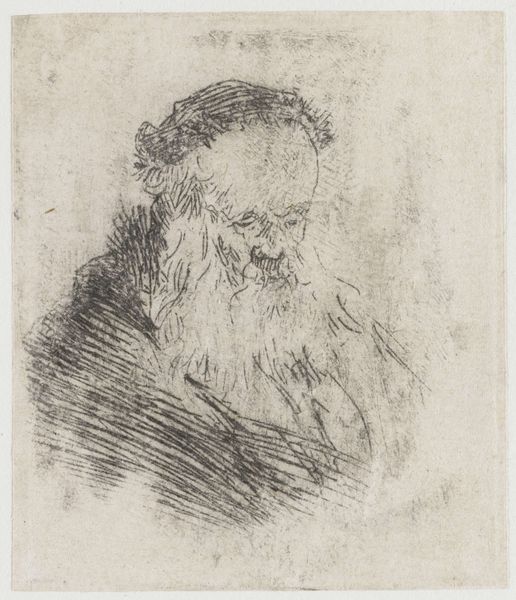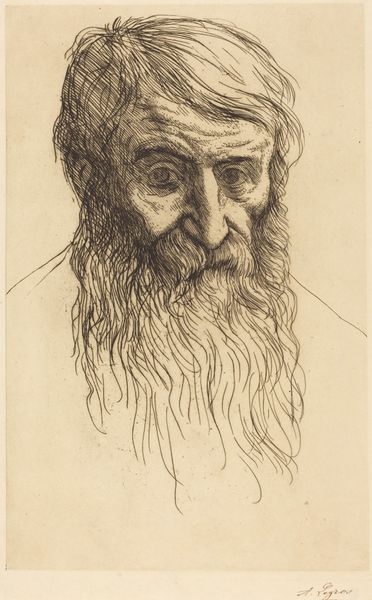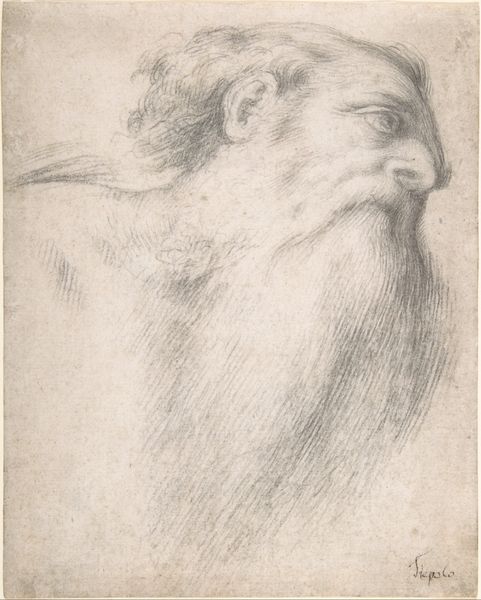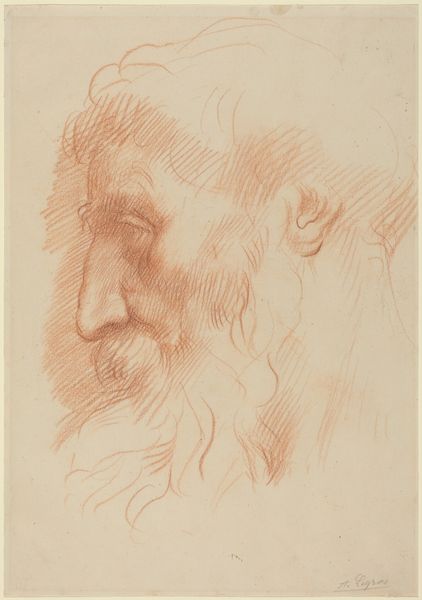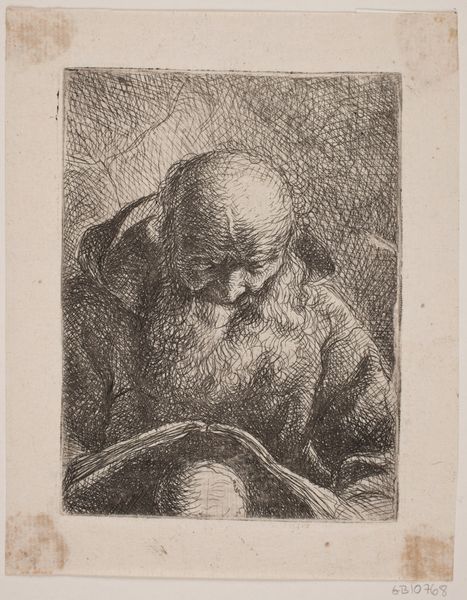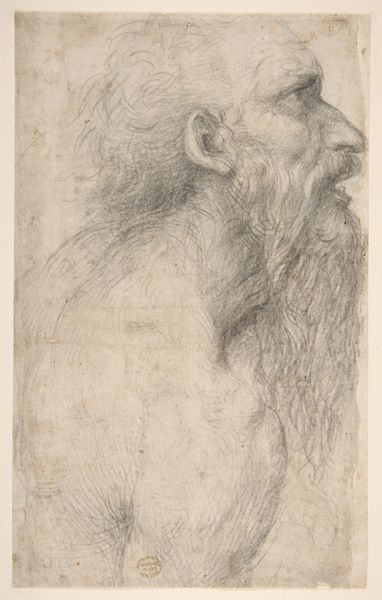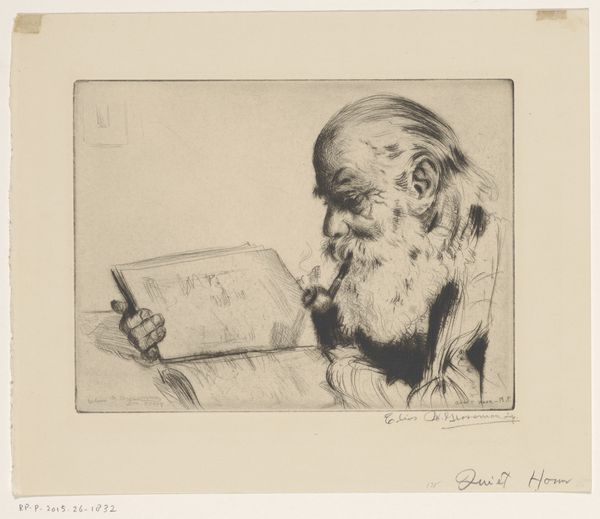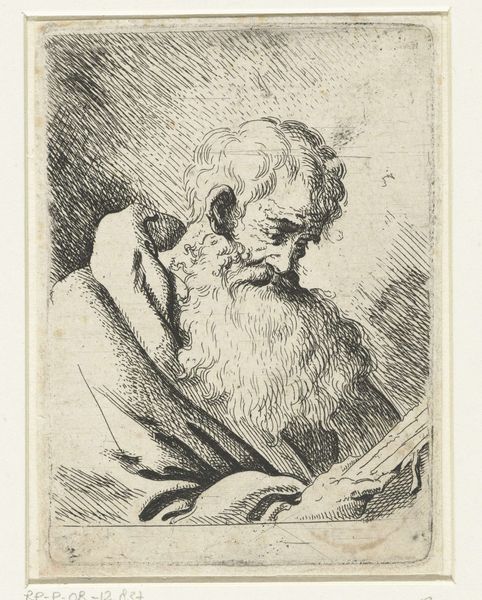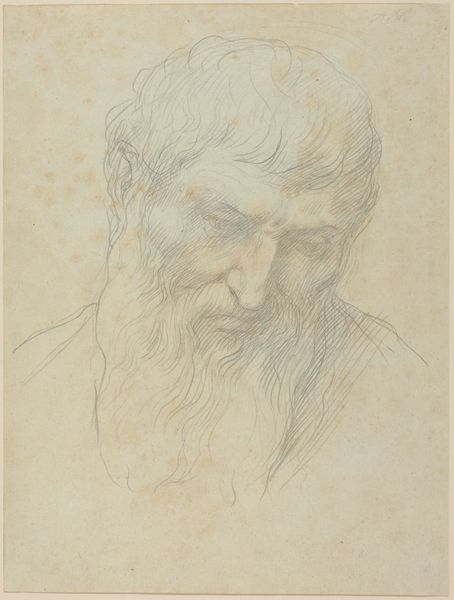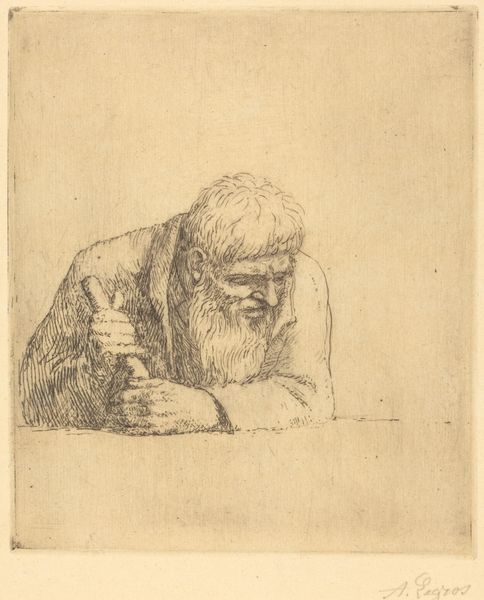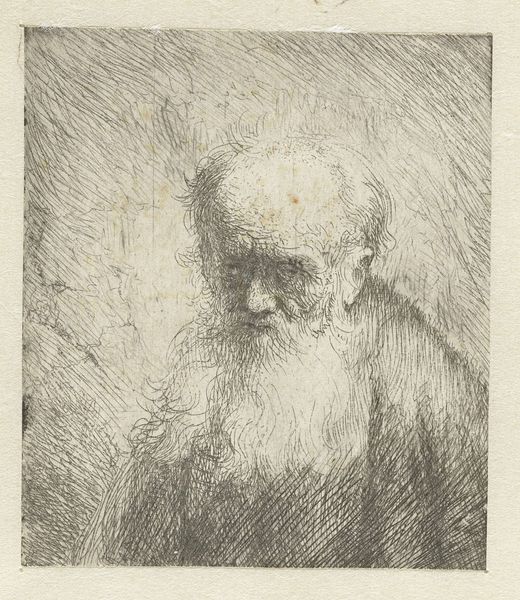
Study of the Head of a Man Reading (Etude de tete d'homme lisant)
0:00
0:00
drawing, print, etching, graphite
#
portrait
#
drawing
#
toned paper
#
facial expression drawing
#
light pencil work
# print
#
etching
#
pencil sketch
#
personal sketchbook
#
pencil drawing
#
ink drawing experimentation
#
pen-ink sketch
#
graphite
#
portrait drawing
#
pencil work
#
realism
#
monochrome
Copyright: National Gallery of Art: CC0 1.0
This is Alphonse Legros' "Study of the Head of a Man Reading," an etching made with metal, acid, and ink. Notice how the image emerges from the matrix of fine lines, like a photographic negative coming into focus in a darkroom. This effect is a direct consequence of the etching process: Legros would have coated a metal plate with wax, drawn his design, then submerged the plate in acid. This would bite into the exposed lines, allowing them to hold ink. From there, he would have printed the image onto paper. The labor-intensive nature of etching, combined with its capacity for capturing fine detail, made it a popular medium for both artists and commercial printers. Legros’s subject, an older, working-class man, suggests how the print medium could democratize art, making images accessible to a wider audience. Yet the sheer amount of skilled work required to produce the plate also reminds us of the often-invisible labor behind even seemingly simple images. Ultimately, it is in the convergence of material, process, and social context that we find the full richness of this quiet study.
Comments
No comments
Be the first to comment and join the conversation on the ultimate creative platform.
